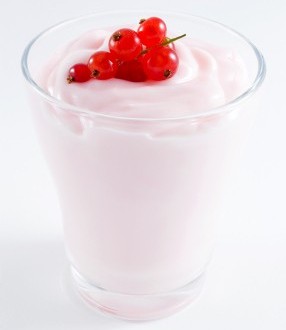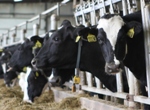Since the dawn of civilization, agriculture has been improved by a continuous process of breeding new plants and animals. Some of the earliest genetic modifications came when herders figured out how to breed certain of their livestock– including Aurochs, the ancient ancestors of today’s dairy cow – to improve their desirable traits.
Human understanding of how to improve all agricultural species, whether animals or plants, has come a long way since then. We have evolved from the ancient trial and error approach, to Austrian scientist Gregor Mendel’s groundbreaking 19th century discovery of how genetic traits are inherited, to today’s more precise ability to decode and transfer specific genes.
Just as Mendel’s pioneering genetic work was controversial in its day, the 21st century use of genetic modification of agricultural crops is the target of today’s anti-science crowd. And that’s causing those of us in food production a new headache, as these critics try to scare consumers by raising fears that have no basis in fact.
The dairy sector is all too familiar with complaints about the presence of GMOs. Twenty years ago, when the Food and Drug Administration first permitted the use of recombinant bovine somatotropin in dairy farming, one of the complaints was that the drug was produced by genetically-modified bacteria. That specific anti-GMO argument lost traction over time, as the main objection to rBST became the presence of hormones in the milk supply, regardless of the fact that all milk contains hormones – and there is nothing harmful about them.
Today, largely in an effort to help boost sales of organic goods, the anti-biotech bandwagon has become reenergized if not reengineered, and is focused on the presence of GMO-derived ingredients in a variety of foods. It’s a big, inviting target for those who want to cast doubt on the safety of our food supply. More than 90% of the corn, soybeans, sugar beets and cotton grown today in the U.S. sprout from seeds that have been genetically modified to offer a specific beneficial trait – often for insect or weed-killer resistance. The output of these crops – all of which have gone through extensive evaluation for human and animal safety – is consumed, in various forms, by both humans and livestock. It’s hard to find any processed foods in the U.S. without some trace of GMO ingredients, and next to impossible to find livestock that haven’t been raised on GMO feedstuffs (excepting, of course, organic foods).
That means food marketers across the value chain are perpetually exposed to critics, however shrill and unreasonable, on this issue. As we’ve seen in states from California to Connecticut, the anti-technology crowd has gone both to state legislatures, as well as to the ballot box, to push for mandatory labeling of foods containing GMO ingredients. High-profile labeling battles on the West coast, including California’s ballot initiative, as well as the more recent one in Washington State, were lost by the GMO critics. But labeling bills were passed last year in Connecticut and Maine – though they won’t become effective unless additional states in that region pass similar measures.
For groups like NMPF that support the appropriate, science-based use of biotechnology in food, and are concerned with the demonization of products that are time-tested and safe, what are the best responses?
We can and do use the facts, such as that feeding cows GMO grain does not in any way affect the milk from those dairy cows – there is no detectable difference compared to milk from cows fed crops that aren’t genetically modified. The same applies to their meat. Most of the labeling initiatives at the state level have exempted dairy products for this obvious reason.
Unfortunately, that hasn’t stopped the activist assault, using social media in many cases, against branded companies that won’t disavow the use of GMO feeds in their milk supply. We’ve seen recent cases where prominent manufacturers of yogurt and butter have been targets of these actions. In both cases, the critics’ call to action – despite making no case for a difference in the product – was to urge consumers to buy organic. The targets shift, but the tactics remain the same.
The dairy sector has worked to develop consumer-focused information intended to put this issue into context, such as that crops produced through biotechnology are researched extensively to make sure they are safe for people, animals and the environment. Government agencies closely review the safety data and do not approve products unless they can be demonstrated safe. Today’s biotech products receive an average investment of $136 million and 13 years of research to bring to market. And one of the most important facts: after 20 years of use, and billions of servings consumed by humans and animals, there is not one single documented case of an adverse health reaction due to GMO food consumption. None. Unfortunately, facts presented without emotion suffer in comparison to falsehoods presented with feeling.
Part of our challenge on GMO grain use today is similar to what the dairy sector dealt with 20 years ago on rBST. The pushback by activists trying to generate consumer concern puts farmers in the middle, caught between their customers, and the compelling benefits of agricultural biotechnology. The reality is GMO seeds help farmers use fewer chemicals, reduce water and fuel usage, and allow more crops to be harvested without plowing over additional acres of land. Farmers will always be the best advocates for their practices. The best defense is an offense in which farmers talk about the real benefits to the environment and the public from GMO traits.
Critics of ag biotechnology assert that this battle is over who “controls” the food supply. The reality is that this is a battle for control over the choices that every participant in the food chain can make, and if we don’t participate in the discussion, there will be far fewer choices for everyone.

 Due to the significant public health risks associated with the consumption of raw milk, the two organizations representing the nation’s dairy farmers and dairy companies jointly urged state lawmakers in South Dakota to reject efforts easing regulations surrounding raw milk sales directly to consumers.
Due to the significant public health risks associated with the consumption of raw milk, the two organizations representing the nation’s dairy farmers and dairy companies jointly urged state lawmakers in South Dakota to reject efforts easing regulations surrounding raw milk sales directly to consumers. The U.S. Dairy Export Council (USDEC) and the National Milk Producers Federation (NMPF) are calling on Russian authorities to end its country’s three-year embargo of U.S. dairy products. The groups’ call for action follows Russia’s refusal to accept a New York company’s Greek yogurt for consumption by U.S. athletes at the winter Olympics in Sochi, Russia. “This is yet another example of how Russia’s blockade of U.S. dairy products is harming U.S. companies,” says Tom Suber, USDEC president.
The U.S. Dairy Export Council (USDEC) and the National Milk Producers Federation (NMPF) are calling on Russian authorities to end its country’s three-year embargo of U.S. dairy products. The groups’ call for action follows Russia’s refusal to accept a New York company’s Greek yogurt for consumption by U.S. athletes at the winter Olympics in Sochi, Russia. “This is yet another example of how Russia’s blockade of U.S. dairy products is harming U.S. companies,” says Tom Suber, USDEC president. When two years of Congressional wrangling over the farm bill and the federal dairy program finally ended this week with Senate approval of the measure, no one, including milk producers, got exactly what they wanted. But the $956 billion, 950-page bill does feature the most significant rewrite of dairy policy in more than a generation, through the creation of a new margin insurance program.
When two years of Congressional wrangling over the farm bill and the federal dairy program finally ended this week with Senate approval of the measure, no one, including milk producers, got exactly what they wanted. But the $956 billion, 950-page bill does feature the most significant rewrite of dairy policy in more than a generation, through the creation of a new margin insurance program. Dairy marketers that make, sell, or distribute foods composed of real American milk can tout their offerings in the new
Dairy marketers that make, sell, or distribute foods composed of real American milk can tout their offerings in the new 



